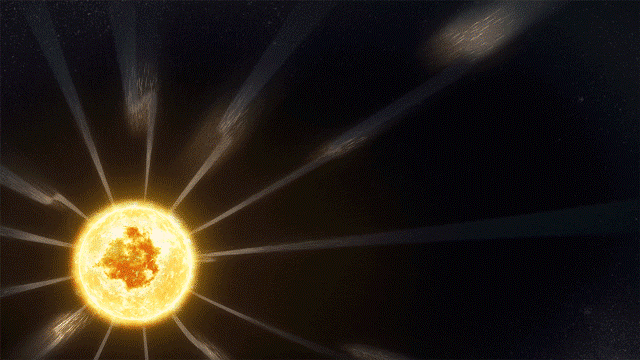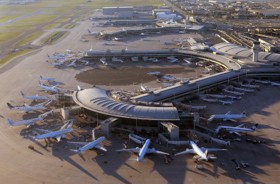
Parker Solar Probe observed switchbacks- traveling disturbances in the solar wind that caused the magnetic field to bend back on itself - an as-yet unexplained phenomenon that might help scientists uncover more information about how the solar wind is accelerated from the Sun. Photo: NASA's Goddard Space Flight Center/Conceptual Image Lab/Adriana Manrique Gutierrez.
WASHINGTON (PTI): NASA's Parker Solar Probe -- which has flown closer to the Sun than any spacecraft ever -- has beamed back the first observations from its close encounters with the Sun, revealing a "spectacular trove" of data about the solar wind and space weather, the US space agency said.
The data from the probe, published in the journal Nature, offers clues to long-standing mysteries, including why the Sun's atmosphere, known as the corona, is hundreds of times hotter than its surface, as well as the precise origins of the solar wind.
Since its launch in August 2018, Parker Solar Probe has completed three of the 24 planned passes through never-before-explored parts of the Sun's atmosphere, using cutting-edge scientific instruments to measure the environment around the spacecraft.
These findings reveal new information about the behaviour of the material and particles that speed away from the Sun, bringing scientists closer to answering fundamental questions about the physics of our star, NASA said in a statement.
In the quest to protect astronauts and technology in space, the information Parker has uncovered about how the Sun constantly ejects material and energy will help scientists re-write the models used to understand and predict the space weather around our planet, it said.
The findings will also help understand the process by which stars are created and evolve, according to the US space agency.
"This first data from Parker reveals our star, the Sun, in new and surprising ways," said Thomas Zurbuchen, associate administrator for science at NASA.
"Observing the Sun up close rather than from a much greater distance is giving us an unprecedented view into important solar phenomena and how they affect us on Earth, and gives us new insights relevant to the understanding of active stars across galaxies," Zurbuchen said.
He explained that it is just the beginning of an incredibly exciting time for physics related to Sun, with Parker at the vanguard of new discoveries.
"The first three encounters of the solar probe that we have had so far have been spectacular," said Stuart Bale, a professor at the University of California, Berkeley, and lead author of an article about new results.
"We can see the magnetic structure of the corona, which tells us that the solar wind is emerging from small coronal holes," Bale said in a statement.
One of the main goals of the Parker Solar Probe is to discover the source of the "slow" solar wind and how it is accelerated in the hot atmosphere of the Sun -- the 1 million-degree Celsius solar corona.
The solar wind consists of charged particles, mostly protons and helium nuclei, travelling along the Sun's magnetic field lines, the researchers noted.
The so-called "fast" solar wind, clocked at between 500 and 1,000 kilometres per second, is known to come from large holes in the solar corona at the Sun's north and south poles, they said.
However, the origin of the "slow" solar wind, which is denser but about half the speed of the "fast" solar wind, is more poorly understood.
Thanks to extreme ultraviolet mapping of the Sun by other spacecraft, the researchers were able to trace the wind and the magnetic fields back to a source -- coronal holes -- that strongly suggests that these holes are the source of the slow solar wind.
Coronal holes, which are related to sun spots, are areas that are cooler and less dense than the surrounding corona.
Another surprise, the researchers said, was the dust that peppered the spacecraft repeatedly during each fly-by at perihelion -- the point in the orbit where the spacecraft was closest to the Sun.
Smaller than a micron, which is a thousandth of a millimetre, the dust particles are likely debris from asteroids or comets that melted near the Sun and left behind their trapped dust, the researchers said.
That dust is now orbiting the Sun, and Bale suspects that much of it that hitting the spacecraft is being ejected outwards by light pressure and destined to escape the solar system entirely.
 Next Article
Next Article













The Indian Air Force, in its flight trials evaluation report submitted before the Defence Ministry l..
view articleAn insight into the Medium Multi-Role Combat Aircraft competition...
view articleSky enthusiasts can now spot the International Space Station (ISS) commanded by Indian-American astr..
view article